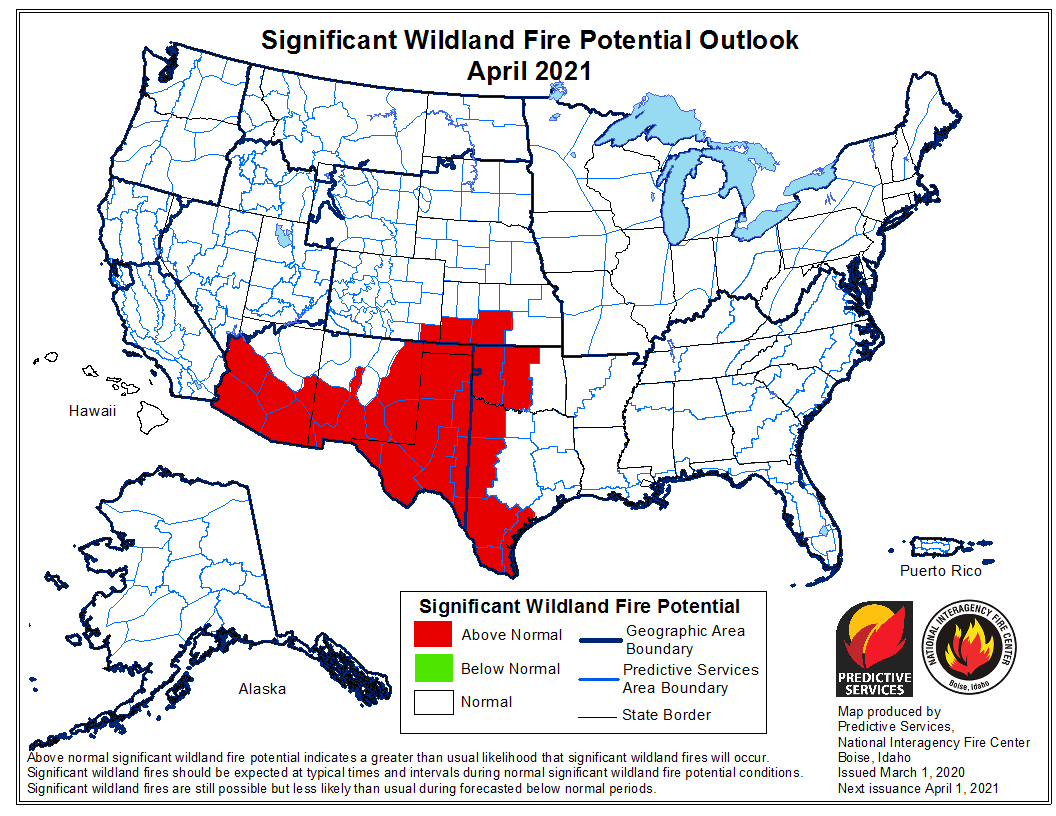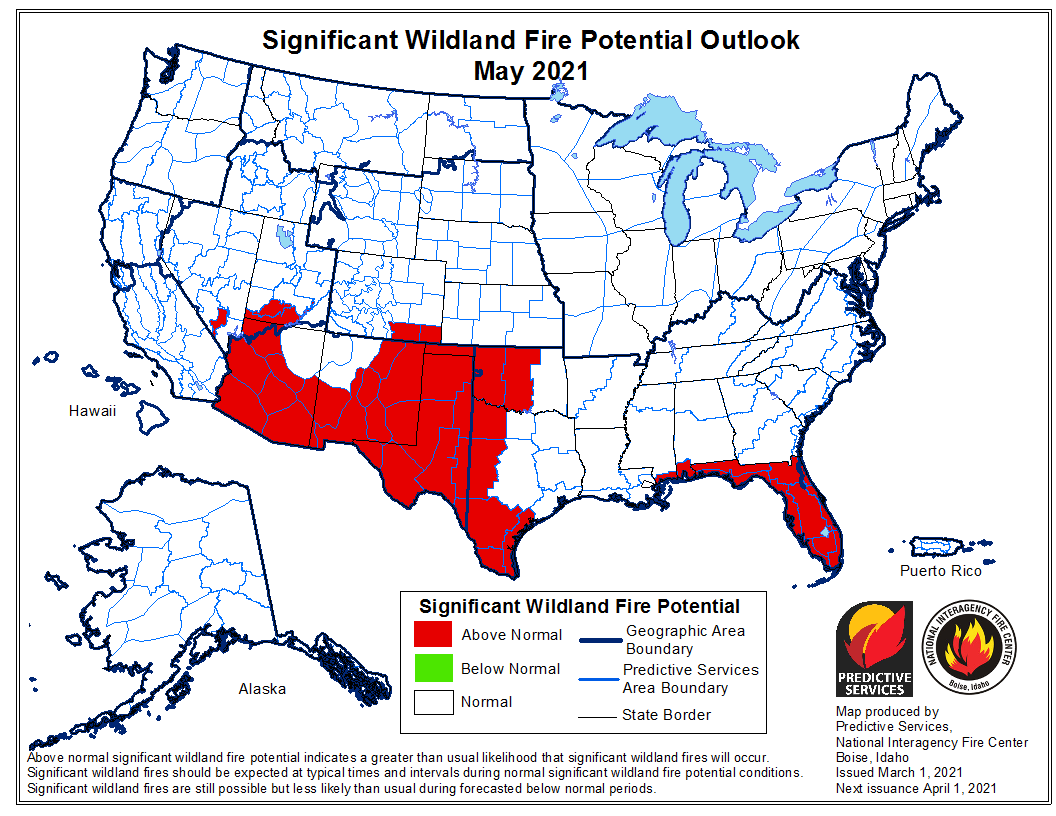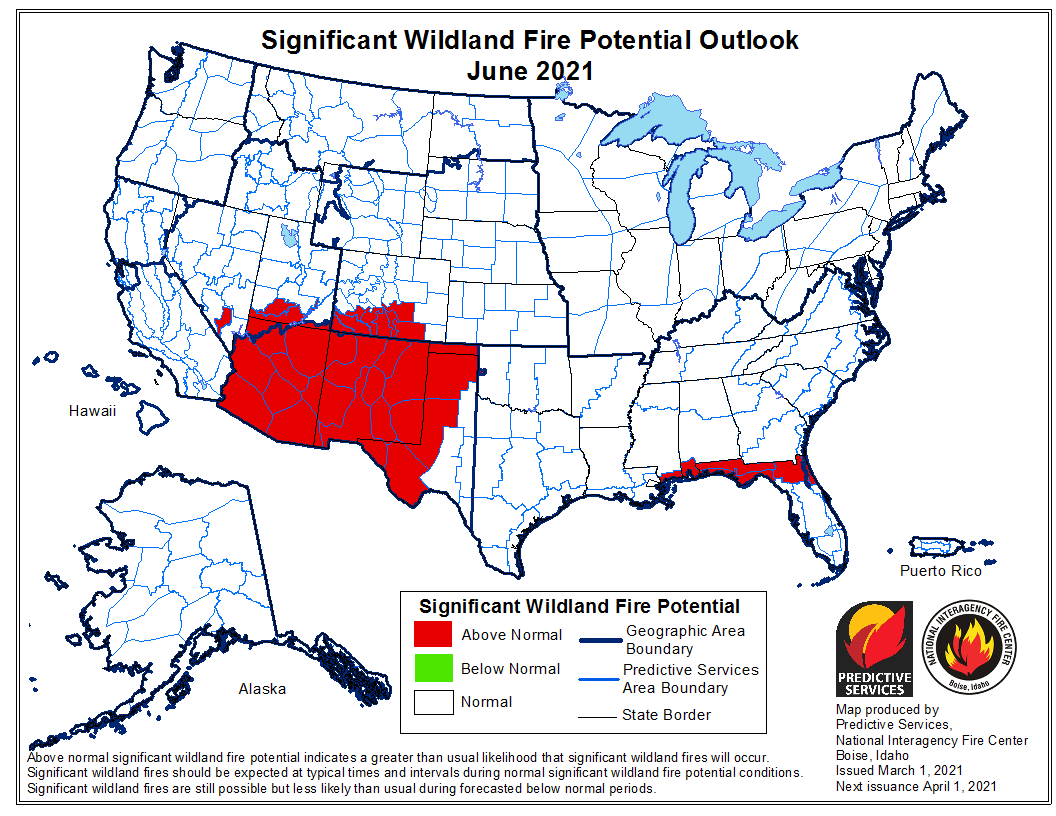The forecast for wildland fire potential issued August 1 by the National Interagency Fire Center predicts that the Northwest, Northern Rockies, and the mountainous areas of California will have above normal fire potential in August and September. Even into October much of the Northern Rockies, Northern California, and coastal mountains of Southern California will still be above normal.
The data from NIFC shown here represents the cumulative forecasts of the ten Geographic Area Predictive Services Units and the National Predictive Services Unit.
Below:
- An excerpt from the NIFC narrative report for the next several months;
- Additional NIFC monthly graphical outlooks;
- NOAA’s three-month temperature and precipitation forecasts;
- Drought Monitor;
- Keetch-Byram Drought Index.
“Climate outlooks indicate warmer than normal conditions are likely for much of the CONUS, especially the West, into fall. The northern Intermountain West is likely to have drier than normal conditions in August, expanding to include most of the West during fall. Near normal precipitation is likely with the monsoon in August, which should continue to alleviate drought. However, drought is likely to expand and intensify across much of the West into fall.
“Much of Southern Area and areas south of the Ohio River are likely to have below normal significant fire potential through September, but much of the Southeast U.S. is forecast to have above normal fire potential in October and November. Normal significant fire potential is forecast for Alaska along with most of Eastern Area.
“Above normal significant fire potential is likely to remain in portions of northern Minnesota into August. Above normal significant fire potential is forecast to continue through September for much of the Northwest, Northern Rockies, and northern portions of the Great Basin and Rocky Mountain Geographic Areas. Most of these areas will return to normal fire potential in October and November. Most mountains and foothills in California are forecast to have above normal potential through September with areas prone to offshore winds likely to retain above normal potential into October and November in southern California. Leeside locations in Hawaii are likely to have above normal significant fire potential into October.”
































